Parc Güell is one of the world’s most intriguing parks. The park’s colorful main staircase and the fanciful pavilions that were designed by Antoni Gaudí look like they belong in some fairy tale.
A Failed Project
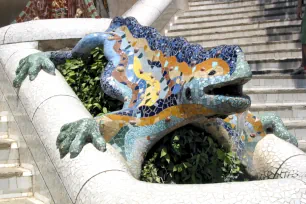
This popular park started out as a development project. Eusebi Güell, a well known Catalan industrialist, acquired a seventeen hectare (42 acres) large hilly plot in the Gràcia district, just north of Barcelona. He wanted to turn the area into a residential garden village based on English models. Sixty housing units as well as several public buildings were planned.
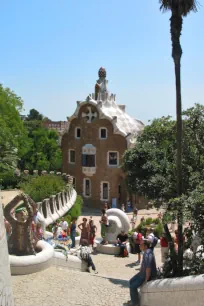
In 1900 Güell commissioned his friend and protégé Antoni Gaudí with the development of the project. With the support from other architects including Josep M. Jujol and his disciple Francesc Berenguer, Gaudí worked on the garden village until 1914 when it was clear the project was a commercial failure: Güell failed to sell a single house.
In 1918 the city of Barcelona acquired the property and in 1922 it opened to the public as a park.
Gaudí’s Staircase and Pavilions
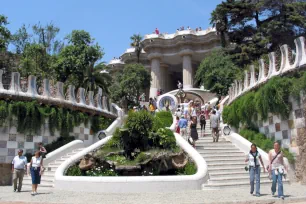
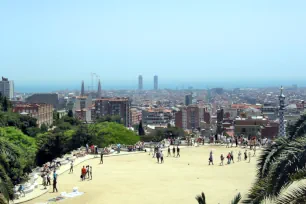
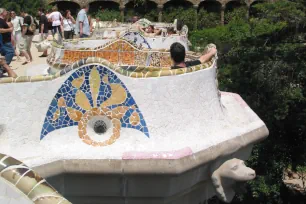
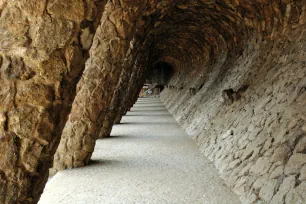
Two houses were completed, as well as pavilions for visitors and park keepers. The pavilions, designed by Gaudí, seem to be taken out of Hansel and Gretel, with curved roofs covered with brightly colored tiles and ornamented spires. The staircase at the entrance of the park is also designed by Gaudí. The dragon-like lizard at the center of the with trencadis-ceramics decorated staircase is the best known symbol of the park.
Serpentine Bench
A connecting flight of stairs leads to another famous feature of the park: the Gran Placa Circular. Originally intended as a marketplace for the residents, this plaza is bordered by what was known as the world’s longest bench. The colorful ceramic serpentine bench, designed by Jujol, twists snakelike around the plaza. The view from the plaza is spectacular, you can see as far as the Mediterranean Sea. The whole platform is supported by eighty-six huge columns, creating a hall beneath the plaza, known as the Sala Hipòstila.
Gaudí Museum
Between 1906 and 1926, Gaudí lived in one of the two houses that were completed. The house, known as the Casa Museu Gaudí, was designed by Francesc Berenguer. It serves as a museum and displays some of Gaudí’s furniture (including some from the Casa Batlló) and drawings. The park also includes the Casa Trias (not open for visitors). The buildings in the park are connected by winding roads with paths that are often supported by tree-like columns.
Due to its unique design, Parc Güell was declared a world heritage site by UNESCO in 1984. Several other creations by Antoni Gaudí have been given this honor, including Casa Milà, Casa Batlló, Palau Güell, Casa Vicens and the nativity facade of the Sagrada Família.
- Next: Casa Batlló
- More Sights & Attractions in Barcelona

